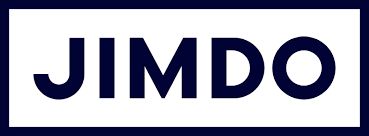You don’t have to look far to realize just how often companies, nonprofits or governmental entities are falling prey to cyberattacks these days. You just have to look in your mailbox.
The number of emails and letters that consumers are receiving of late, telling them that their personal data was exposed in a recent cyberattack, is eye-opening. In fact, the Identity Theft Resource Center released its U.S. data breach findings for the first half of 2024: According to the center, the number of data breach victims exceeded 1 billion, rising by 500% in the first six months of 2024, compared with the first half of 2023.
The list of victims over the last few years is long and sobering. Here are just a few examples: Prudential Financial, Infosys McCamish System, the Snowflake cloud service, PayPal and Slack.
These growing incidents of data breaches and malicious cyberattacks aren’t limited to large enterprises. Startups with weak cybersecurity protocols are often preferred targets for malicious actors. A Verizon report revealed that one in five cyber breach incidents occur in startups with poor cybersecurity. So, it’s pivotal for startups to adopt a holistic approach to complete cyber security.
One security approach that has gained significant momentum in recent years is the zero-trust model.
In this post, let’s take a look at the zero-trust framework and three key areas where startups can implement its principles for strengthening cyber security.
What is zero trust?
Zero trust is a modern cybersecurity framework that follows the principle “always verify, don’t trust.”
Unlike the traditional “castle-and-moat” security approach that assumes the data, users, endpoints, and identities within the organization are safe, zero trust authenticates, verifies, and consistently analyzes the security status of every cyber asset before granting access to data and network applications.
Here are the core principles of the zero-trust model:
- Identity and access management (IAM): This involves creating a unique digital identity per person and machine to connect to remote devices with crucial verifying attributes, such as location. This ensures that only authorized users and workloads get access to confidential resources.
- Least privilege access management: This provides people and applications with “just-in-time” and granular access to specific resources for a predefined time only when they “justify” the reason to the administrator. These privileges automatically expire after the pre-defined time and thus help security teams reduce the chances of data compromise.
- Continuous monitoring: The zero-trust framework involves consistent monitoring of the activities in the network to help security teams detect and overcome potential security threats.
The zero-trust security framework thus ensures that no unauthorized users, workloads, or machines (on-premises and in public or private cloud environments) can access crucial data and resources. This enables security teams to gain better visibility of the IT infrastructure, especially in hybrid setups, and prevent cyberattacks.
No wonder, global spending on zero-trust security solutions is increasing. In fact, reports reveal that its market size will cross $60.7 billion by 2027, with a CAGR of 17.3%.
Here are the three key areas where startups can implement zero-trust security principles.
7 Essential Cybersecurity Products and Software for Small Businesses
1. Your containers’ workloads
Containers are standard software build infrastructure units that bundle an application’s code with the related libraries and configuration files and the dependencies needed for the application to run seamlessly. They help implement applications efficiently across environments.
Businesses, especially software startups, use containers heavily to enhance their modern applications’ deployment speed and portability. According to Gartner, 85% of organizations will run containers in production by 2025.
As containerization is becoming prevalent, cyberattacks targeting containers are increasing as well. Security teams must protect their infrastructure to ensure seamless operations.
Containers have multiple layers to secure, such as the host that runs the container, the container that runs the image, and the image itself. In addition, containers need to access external resources like databases, APIs and other containers. Weak access controls and poorly managed secrets (such as tokens, APIs, and credentials) can compromise sensitive information, enabling hackers to steal your company’s data.
Secrets management can be relatively straightforward to manage when you’re first starting out, but as container sprawl starts to occur, so does secrets sprawl. The leading container orchestration tools (which automate containerized workloads and services), such as Azure Container Instances and Kubernetes, have built-in secrets management solutions, such as Azure Key Vault, Docker Secrets and Kubernetes Secrets. However, they offer limited capabilities for a multi-cloud environment.
In this case, a SaaS-based secrets management platform like Akeyless helps. This tool lets you centrally secure secrets, including passwords, tokens, certificates, crucial API keys, and more in a unified platform with a secure vault, and manage them with roles, rotation rules and just-in-time protocols.
What’s more, it allows secure secrets sharing (within the organization and externally with third parties for a pre-defined or limited time), continuous monitoring, and auditing, with compliance maintenance and automated secrets rotation. In short, it helps businesses implement zero-trust principles across their container workloads, thus improving the overall security posture.
AppSumo is the store for entrepreneurs. We curate essential software deals that every entrepreneur needs to run their business.
10 Cybersecurity Tips Every Entrepreneur Should Know
2. User product interfaces
Passwords are unreliable parameters for granting access to operating systems, applications, web services, etc.
The reason? Remote work culture and policies like bring-your-own-devices (BYOD) have made it challenging to identify valid remote access attempts from cyberattacks.
That’s where two-factor authentication (2FA) can help.
2FA is an identity and access management cybersecurity method that requires two forms of identification to access a company’s crucial resources and data. It creates an additional layer of security for cyber assets.
In addition to a username and password, it requires an additional login credential to verify the user’s identity. This can include a text with a unique code sent to the user’s phone, a security question, or biometrics using the user’s fingerprint, retina, or face.
Using Duo, you can easily implement 2FA on apps, devices and network connections, and the service supports native integration with dozens of platforms and code bases. This helps prevent hackers from misusing stolen passwords and login information to exploit your system or data.
For better cybersecurity, grant access to applications or a system with the lowest level of access to help employees complete a specific task. This can ensure the successful implementation of the zero-trust principle “always verify, never trust.”
Free Digital Skills Training: From Cybersecurity to Accounting
3. Your cloud storage
Most businesses operate in cloud environments managed by third-party SaaS vendors and cloud service providers. Since these services are not a part of the firm, their network controls are different. As a result, businesses have data and applications spread across multiple locations.
This cloud storage setup can make it challenging for your team to gain visibility into IT infrastructure security and monitor users and devices accessing data and applications. In addition, they may lose insight into how sensitive data and other assets are used and shared.
In short, their key concerns can be protecting cloud storage against data leakage, threats to data privacy, and confidentiality breaches. In addition, establishing consistent data security policies across on-premise and cloud environments can be draining.
In such instances, a unified security architecture based on a zero-trust security framework, providing secure access to your organization’s data, can help.
For this, create unique digital identities per person and allow users and machines to access specific resources (granular approach) for a specified timeframe. The privilege to access the resources should expire after the pre-defined timeframe. This unified least privilege and identity-based access can help monitor, control, and limit data access, thereby providing clear visibility into potential risks.
Help your customers find you with a home for your business online. Jimdo has all of the digital tools you need, including a customized, compliant website, an online store that's open 24/7, and more.
Conclusion
The zero-trust framework assumes a network’s security is always prone to threats (internal and external). It helps businesses create a strategic and ruthless approach to safeguard their assets, thereby alleviating the most common cybersecurity mistakes.
So, implement zero-trust security principles in the three areas shared in this post to protect your company assets from cyberattacks.








